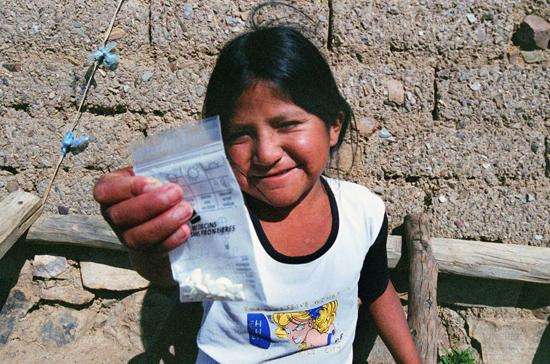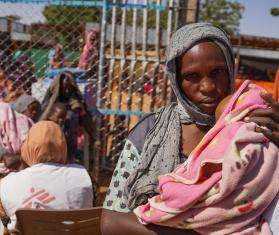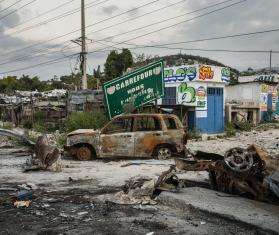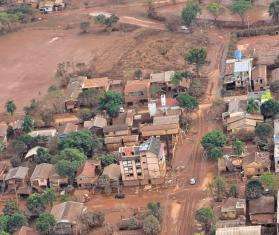MSF calls on endemic countries to diagnose and treat Chagas patients; demands more research and development of new medicines, rapid diagnostic and cure tests
Madrid, July 9, 2009 — The international medical humanitarian organization Doctors Without Borders/Medecins Sans Frontieres (MSF) today launched a campaign to raise awareness of the parasitic disease Chagas. MSF is calling on countries where the disease is endemic to stop neglecting the disease by moving beyond prevention activities to increased diagnosis and treatment.
The campaign, “Chagas: It’s Time to Break the Silence,” coincides with the 100th anniversary of the discovery of one of the world’s most neglected diseases.
Approximately 10-15 million people in Latin America are infected with Chagas every year. It is estimated that 14,000 people die of the disease annually. Most Chagas patients are asymptomatic and the disease often goes undiagnosed, so the true scope of Chagas-related deaths is unknown. MSF is also calling for more research and development toward new and more effective treatments, rapid diagnostic tests for use in remote settings, and better methods for determining treatment success.
Additional background information on Chagas is available online:
/article/chagas-its-time-break-silence
Also visit MSF's Chagas website:
www.chagas-break-the-silence.com
Chagas disease is caused by the Trypanosoma cruzi parasite. In most Latin American countries, the disease is transmitted by the bite of the vinchuca insect although transmission is also possible from mother to child, through blood transfusions, organ transplants, and contaminated food. Chagas patients can be asymptomatic for years, but during the chronic phase of the disease one third develop serious health problems—mainly heart and intestinal complications—that can lead to death.
“One of the main problems we have is that for years patients have no symptoms, so they do not know they are sick and they receive no treatment,” said Dr. Nines Lima, MSF’s tropical medicine advisor. “Active case detection is essential to find and treat infected people.”
Chagas is endemic in several Latin American countries but worldwide migration means that more and more cases are being reported in the United States, Europe, Australia, and Japan. Chagas is a potential killer, but so far governments have focused on prevention and vector control rather than on the treatment of patients. Integrating Chagas care into primary health care facilities would greatly improve patient access to treatment.
The sooner the disease is detected, the more effective the treatment. The only two existing drugs—benznidazol and nifurtimox—were developed over 35 years ago through research not specifically focusing on Chagas. Although these medicines are very effective in newborn and breastfeeding children, only about 60 to 70 percent of adolescents and adults are successfully treated. The older the patients, the greater likelihood they will experience side effects from the drugs.
“Doctors do not treat children, let alone adults, for fear of side effects,” said Dr. Tom Ellman, MSF head of mission in Bolivia, where the organization runs a Chagas treatment program. “We are showing that these effects are manageable in both cases. Leaving patients untreated is no longer ethical.”
However there is still an urgent need for better drugs for the treatment of Chagas. The disease is one of poverty.and therefore has been absent from research, development and political agendas for years. A recent Global Funding of Innovation for Neglected Diseases (G-Finder) survey, revealed that in 2007 only $10.1 million was spent on research and development of new drugs to treat Chagas.
Research and development must be boosted in order to develop new rapid diagnostic tests, better medicines, and new cure tests to address this disease more effectively.
“The lack of commercial incentives has pushed Chagas into oblivion,” said Gemma Ortiz, head of the MSF Chagas campaign. “New ways to boost research and development and better tools to care for patients need to be found.”
In the coming months, MSF will campaign for greater awareness and commitment to the fight against Chagas. For more information on Chagas disease and the enormous gap between the number of people living with Chagas and those who receive treatment, go to: www.chagas-break-the-silence.com. Visitors can participate in the MSF campaign and “break the silence” by sending information about this silent disease to their friends.
Doctors Without Borders/Médecins Sans Frontières has been working in projects fighting Chagas disease since 1999. Currently, the organization is working in three districts on the outskirts of Cochabamba, in Bolivia, the country with the highest prevalence of Chagas in the world. Activities are carried out in collaboration with the Bolivian Ministry of Health and integrated into five primary health care centers, where children and adults up to 50 years of age are diagnosed and treated. Using the same approach, the organization is currently setting up a new project in the rural zone of Cochabamba region, where it is working to involve the community in all aspects of the strategy (prevention, diagnosis and treatment), in an area where the vector is much more prevalent.
At the end of 2008, MSF had tested over 60,000 people for Chagas, treating 3,100 patients, of whom 2,800 successfully completed their treatment. This shows that, even though the current means are not ideal, diagnosing and treating Chagas in limited resource settings and remote areas is feasible.




